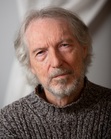Voynich Reconsidered: Currier's dilemma
In 1976, the US National Security Agency hosted a seminar in Washington, D.C. The subject was the enigmatic Voynich manuscript. I have the impression that the agency thought that the manuscript might be an advanced implementation of encryption; and that its decipherment might have benefits to the security of the USA. For forty-one years, the proceedings were secret; the NSA declassified them in 2017.
I have no idea why anyone should suppose the Voynich manuscript to be encrypted; it is simply written in unknown symbols. If we had no knowledge of, say, Chinese characters, we might equally suppose that any text in Chinese was encrypted.
Mary D’Imperio, at that time an employee of the National Security Agency, hosted the seminar. She later wrote the classic book An Elegant Enigma,, as well as two analytical articles on the manuscript. Her entire work on the Voynich manuscript was likewise classified till 2017.
Captain Prescott Currier, a US Navy officer with a background in cryptanalysis, was one of the key speakers in the seminar. In his presentation, he made the following statement::
Capt. Prescott Currier. Image credit: Station Hypo.
We may be permitted one observation. Currier was treating a {9} at the end of a glyph string as a suffix, and an initial {4o} as a prefix. But these were assumptions. They could only hold true if a glyph string was a word as we understand it: that is, a string of characters which appear in the order that they are spoken.
In fact, elsewhere in the seminar, Currier himself referred to the "words" in the Voyich manuscript as follows:
The glyph sequence
As Mary D’Imperio demonstrated in a technical paper for the National Security Agency around 1978, and as Massimiliano Zattera confirmed quantitatively in his presentation to the Voynich 2022 conference, in nearly all of the Voynich “words”, the glyphs follow a sequence. Certain glyphs appear predominantly at the beginning of a “word”; others, generally in the middle; yet others, nearly always at the end.
D’Imperio called the sequence the “five states”; in fact, in her paper she implied that there were as many as seven positions for which glyphs had preferences. Zattera called it the “slot alphabet”, with twelve slots where D’Imperio had found five. However, neither D’Imperio nor Zattera presented control studies of natural languages.
So I am not sure that Currier was correct: I suspect that there may be natural languages in which this phenomenon occurs. For example, in modern English (with thanks to Emory Oxford College), the letters t and a account for 31 percent of all initial letters; and the letters e and s account for 34 percent of all final letters. So we should not be surprised to see a word ending in s to be followed by a word beginning with t.
Even if Currier was correct in saying that the Voynich “words” are not words, we do not have to conclude that the Voynich manuscript is meaningless. We only have to look at the following sequence of letters

Abraham Lincoln, speaking perfect English words at Gettysburg. Image credit: Library of Congress.
In the re-ordered sequence, “words” that end in “s”, “v” or “y” are likely to be followed by “words” beginning with “a”. That is a consequence of the order of the English alphabet.
Next steps
In my ongoing research, I have tried to explore the following issues:
I have no idea why anyone should suppose the Voynich manuscript to be encrypted; it is simply written in unknown symbols. If we had no knowledge of, say, Chinese characters, we might equally suppose that any text in Chinese was encrypted.
Mary D’Imperio, at that time an employee of the National Security Agency, hosted the seminar. She later wrote the classic book An Elegant Enigma,, as well as two analytical articles on the manuscript. Her entire work on the Voynich manuscript was likewise classified till 2017.
Captain Prescott Currier, a US Navy officer with a background in cryptanalysis, was one of the key speakers in the seminar. In his presentation, he made the following statement::
‘''Words" ending in the {9} sort of symbol, which is very frequent, are followed about four times as often by "words" beginning with {4o}. … These phenomena are consistent, statistically significant, and hold true throughout those areas of text where they are found.
I can think of no linguistic explanation for this sort of phenomenon, not if we are dealing with words or phrases, or the syntax of a language where suffixes are present. In no language I know of does the suffix of a word have anything to do with the beginning of the next word.’

Capt. Prescott Currier. Image credit: Station Hypo.
We may be permitted one observation. Currier was treating a {9} at the end of a glyph string as a suffix, and an initial {4o} as a prefix. But these were assumptions. They could only hold true if a glyph string was a word as we understand it: that is, a string of characters which appear in the order that they are spoken.
In fact, elsewhere in the seminar, Currier himself referred to the "words" in the Voyich manuscript as follows:
'That's just the point - they're not words!’Here, I believe, Currier touched on the essence of the Voynich manuscript. The glyph strings that look like words are possibly not words; at least, not words as we understand them.
The glyph sequence
As Mary D’Imperio demonstrated in a technical paper for the National Security Agency around 1978, and as Massimiliano Zattera confirmed quantitatively in his presentation to the Voynich 2022 conference, in nearly all of the Voynich “words”, the glyphs follow a sequence. Certain glyphs appear predominantly at the beginning of a “word”; others, generally in the middle; yet others, nearly always at the end.
D’Imperio called the sequence the “five states”; in fact, in her paper she implied that there were as many as seven positions for which glyphs had preferences. Zattera called it the “slot alphabet”, with twelve slots where D’Imperio had found five. However, neither D’Imperio nor Zattera presented control studies of natural languages.
So I am not sure that Currier was correct: I suspect that there may be natural languages in which this phenomenon occurs. For example, in modern English (with thanks to Emory Oxford College), the letters t and a account for 31 percent of all initial letters; and the letters e and s account for 34 percent of all final letters. So we should not be surprised to see a word ending in s to be followed by a word beginning with t.
Even if Currier was correct in saying that the Voynich “words” are not words, we do not have to conclude that the Voynich manuscript is meaningless. We only have to look at the following sequence of letters
"foru ceors adn eensv aersy ago".The strings that look like words are not words in English, and probably not in any natural language, with the exception of "ago". The initial "a" of several strings is not a prefix. Nevertheless, the sequence contains meaning, which is this:
"four score and seven years ago"which is the opening phrase of Abraham Lincoln’s “Gettysburg Address”.

Abraham Lincoln, speaking perfect English words at Gettysburg. Image credit: Library of Congress.
In the re-ordered sequence, “words” that end in “s”, “v” or “y” are likely to be followed by “words” beginning with “a”. That is a consequence of the order of the English alphabet.
Next steps
In my ongoing research, I have tried to explore the following issues:
* If the glyph strings are the result of a re-ordering process, did the re-ordering happen before or after the transcription?
* If the scribes re-ordered the letters in the source words before the transcription, did they use the source alphabet (for example the Latin, Cyrillic, Glagolitic, Greek or another alphabet)?
* If the scribes first transcribed from letters to glyphs, and then re-ordered the transcribed glyphs), what were the rules for the re-ordering? Did the producer provide them with a "Voynich alphabet"?
No comments have been added yet.
Great 20th century mysteries
In this platform on GoodReads/Amazon, I am assembling some of the backstories to my research for D. B. Cooper and Flight 305 (Schiffer Books, 2021), Mallory, Irvine, Everest: The Last Step But One (Pe
In this platform on GoodReads/Amazon, I am assembling some of the backstories to my research for D. B. Cooper and Flight 305 (Schiffer Books, 2021), Mallory, Irvine, Everest: The Last Step But One (Pen And Sword Books, April 2024), Voynich Reconsidered (Schiffer Books, August 2024), and D. B. Cooper and Flight 305 Revisited (Schiffer Books, coming in 2026),
These articles are also an expression of my gratitude to Schiffer and to Pen And Sword, for their investment in the design and production of these books.
Every word on this blog is written by me. Nothing is generated by so-called "artificial intelligence": which is certainly artificial but is not intelligence. ...more
These articles are also an expression of my gratitude to Schiffer and to Pen And Sword, for their investment in the design and production of these books.
Every word on this blog is written by me. Nothing is generated by so-called "artificial intelligence": which is certainly artificial but is not intelligence. ...more
- Robert H. Edwards's profile
- 67 followers



